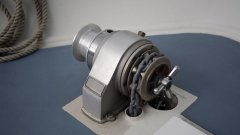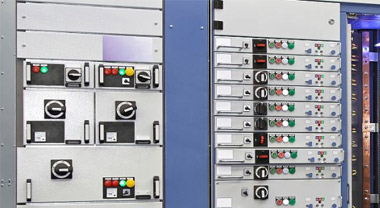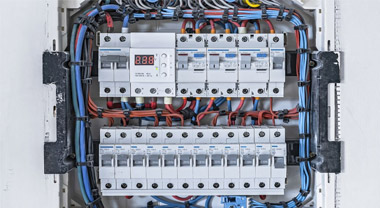How do I know if my circuit breaker is bad?
1. Introduction
1.1. Overview of circuit breakers and their importance
Circuit breakers play a crucial role in electrical systems, protecting them from overloads, short circuits, and other faults that can damage equipment and pose a risk to safety. Understanding the importance of circuit breakers and their proper functioning is essential for maintaining a reliable and safe electrical system.
1.2. Reasons for suspecting a bad circuit breaker
Various symptoms can indicate a bad circuit breaker, such as frequent tripping, failing to trip during electrical faults, or physical signs of damage. Identifying and addressing these issues is crucial to ensuring electrical safety and preventing further problems.
2. Common symptoms of a bad circuit breaker
2.1. Frequent tripping without an apparent cause
If a circuit breaker trips frequently without an apparent cause, it may be an indication of a faulty breaker. This can result from internal damage, wear, or improper sizing, which can compromise the breaker's ability to protect the electrical system.
2.2. Breaker fails to trip during an electrical fault
A circuit breaker that fails to trip during an electrical fault can pose a significant risk to the safety of the electrical system and its users. This malfunction may be due to internal damage, wear, or an incorrectly sized or rated breaker, which can lead to equipment damage or even electrical fires.
2.3. Physical signs of damage or wear
Visible signs of damage or wear on a circuit breaker can indicate that it may be faulty. These signs can include charring, discoloration, or deformation of the breaker's casing or components. Damaged breakers may not function as intended and can pose a risk to electrical safety.
2.4. Breaker feels hot to the touch
A circuit breaker that feels hot to the touch can signal an issue with the breaker or the electrical load it is protecting. Overheating can result from internal damage, excessive current flow, or poor connections, which can lead to reduced performance or failure of the breaker.
2.5. Breaker won't reset or constantly resets
If a circuit breaker refuses to reset or constantly resets, it may be faulty. This issue can be due to internal damage, a persisting electrical fault, or an incorrectly sized or rated breaker. Identifying and resolving the underlying cause is essential for ensuring electrical safety.
3. Testing a circuit breaker
3.1. Visual inspection for signs of damage or wear
A visual inspection of the circuit breaker can help identify any signs of damage or wear that may indicate a faulty breaker. Look for charring, discoloration, deformation, or other signs of distress on the breaker's casing and components.
3.2. Manual reset and testing the trip mechanism
Manually resetting the circuit breaker and testing the trip mechanism can help determine if the breaker is functioning correctly. If the breaker fails to trip or reset properly, it may be faulty and require replacement.
3.3. Using a multimeter to test for continuity
A multimeter can be used to test the continuity of the circuit breaker. With the breaker in the "off" position, place the multimeter probes on the line and load terminals. The multimeter should read "open" or infinite resistance. Then, switch the breaker to the "on" position and test again. The multimeter should now read near zero resistance, indicating continuity. If the readings do not match the expected values, the breaker may be faulty.
3.4. Conducting an insulation resistance test
An insulation resistance test can help determine if the circuit breaker's insulation is compromised. This test is typically performed using a specialized insulation tester or megohmmeter. If the insulation resistance is lower than the manufacturer's specified values, the breaker may be faulty and require replacement.
3.5. Professional testing with specialized tools
In some cases, it may be necessary to seek professional help for testing a circuit breaker. Professional electricians have access to specialized tools and equipment, such as breaker testers and trip simulators, which can accurately assess the breaker's functionality and identify any faults.
4. Addressing a bad circuit breaker
4.1. Importance of seeking professional help
If a circuit breaker is suspected to be faulty, it is crucial to seek professional help from a qualified electrician. Attempting to repair or replace a circuit breaker without the proper knowledge and experience can be dangerous and lead to further issues with the electrical system.
4.2. Properly sizing and rating replacement breakers
When replacing a faulty circuit breaker, it is essential to select a breaker with the correct size and rating for the intended application. This ensures that the breaker can adequately protect the electrical system and maintain proper functionality.
4.3. Upgrading the electrical panel if necessary
In some cases, addressing a bad circuit breaker may involve upgrading the electrical panel. This may be necessary if the panel is outdated, damaged, or incapable of supporting the electrical system's current or future demands.
4.4. Ensuring regular maintenance and inspections
Regular maintenance and inspections of the electrical system can help identify and address potential issues with circuit breakers before they escalate. Scheduling routine check-ups with professional electricians and following a proactive maintenance plan can help ensure electrical system reliability and safety.
5. Preventative measures for maintaining circuit breakers
5.1. Scheduling routine check-ups and inspections
Regular check-ups and inspections with a qualified electrician can help identify potential issues with circuit breakers and other components of the electrical system. This proactive approach can prevent breakdowns and ensure the safe and reliable operation of the system.
5.2. Avoiding circuit overloading and properly distributing electrical loads
Overloading circuits can cause breakers to trip frequently and lead to damage or failure. To avoid overloading, ensure that electrical loads are properly distributed and avoid using too many high-power devices on a single circuit.
5.3. Monitoring for external factors that can impact breaker performance
External factors, such as environmental conditions, damaged wiring, or equipment malfunctions, can impact the performance of circuit breakers. Monitoring for these factors and addressing any issues promptly can help maintain breaker functionality and prevent faults.
5.4. Upgrading and replacing aging components
As electrical systems age, components such as wiring, breakers, and the panel itself can degrade, potentially affecting their performance. Upgrading and replacing aging components can help maintain the proper functioning of circuit breakers and the overall electrical system.
6. Conclusion
6.1. Recap of common symptoms and tests for a bad circuit breaker
In summary, common symptoms of a bad circuit breaker include frequent tripping without an apparent cause, failure to trip during electrical faults, physical signs of damage or wear, overheating, and refusal to reset. Tests that can be conducted to determine the condition of a circuit breaker include visual inspection, manual reset and trip mechanism testing, continuity testing with a multimeter, insulation resistance testing, and professional testing with specialized tools.
6.2. Importance of addressing bad circuit breakers to ensure electrical safety and system reliability
Addressing bad circuit breakers is crucial to maintaining electrical safety and system reliability. By seeking professional help, properly sizing and rating replacement breakers, upgrading the electrical panel if necessary, and ensuring regular maintenance and inspections, one can effectively address faulty breakers and prevent potential hazards.




